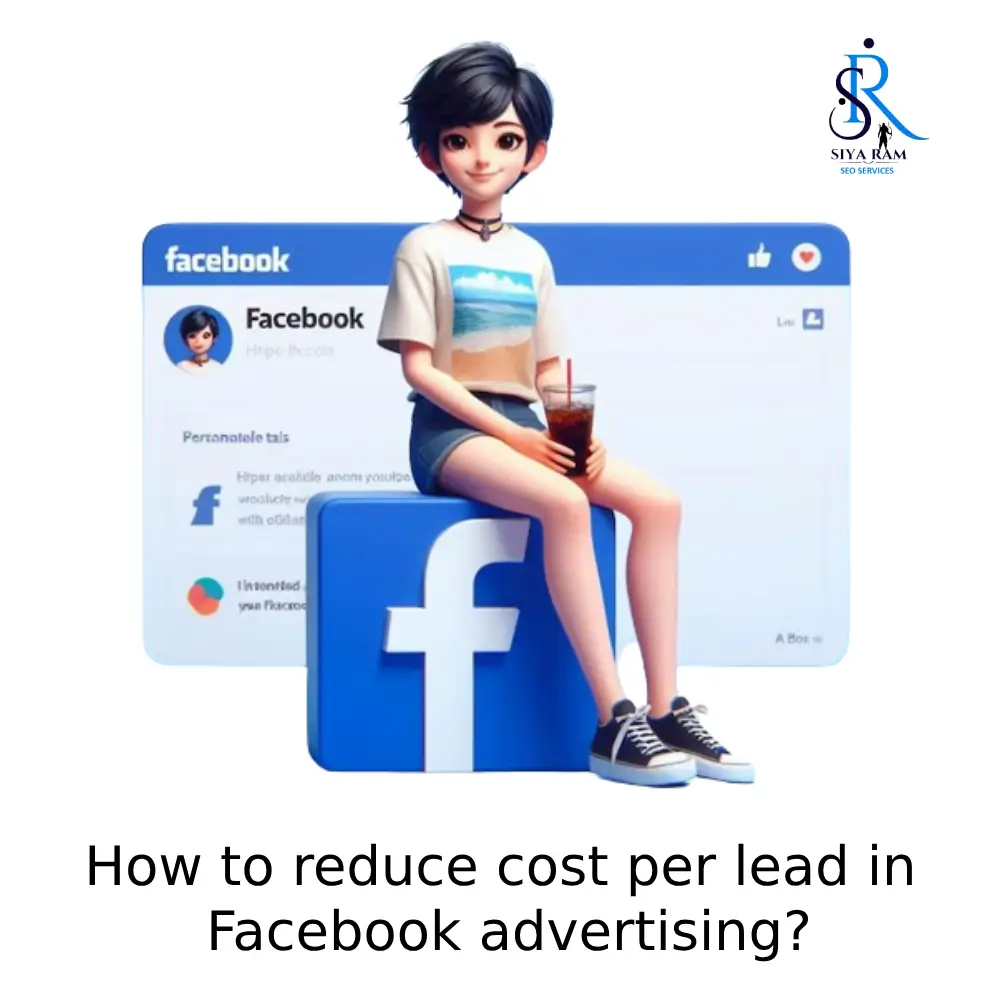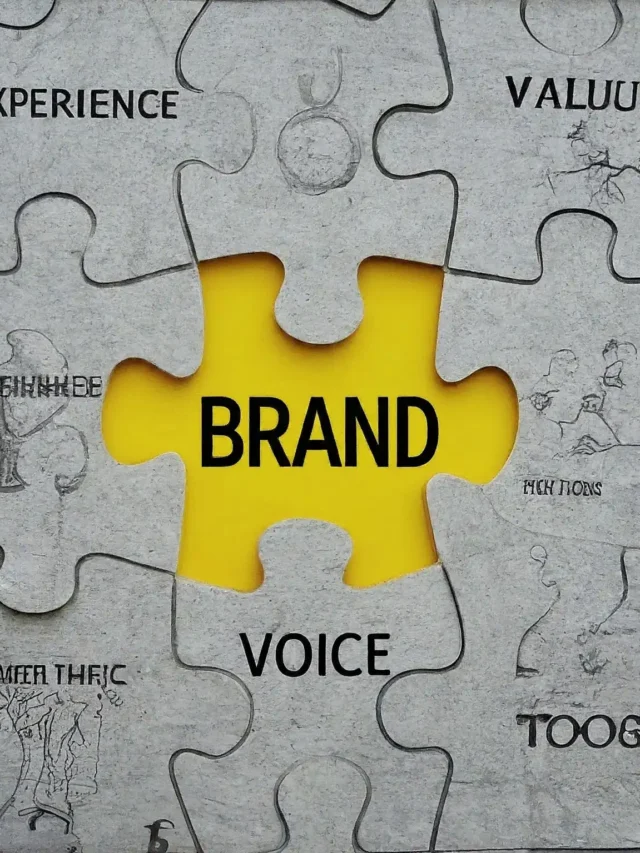Facebook advertising is an important part of digital marketing, especially regarding lead generation. But at times, the cost per lead can add up, quickly draining your ad budget. If you want to reduce your cost per lead in Facebook advertising, you can overcome this challenge by adopting the following strategies.
Precise targeting
Precise targeting in Facebook advertising means that you deliver your ad to people who are interested in your product or service. When you target your ad correctly, you target people who have a high probability of buying your product or using your service. This not only reduces your cost per lead but also improves your ad performance.
Some important tips for precise targeting:
- Choose the demographics: Select the right age, gender, and location for your ad. For example, if your product is for the younger generation, you can target people aged 18-30.
- Interests and behavior: You can also target users based on their interests and behavior on Facebook. For example, if you’re selling fitness products, you can target people who are interested in fitness, gyms, or health.
- Custom audiences: You can create custom audiences using your existing customer list, website visitors, or social media followers. This allows you to retarget people who are already familiar with your brand.
- Look-alike audiences: By creating look-alike audiences, you can reach people who are similar to your existing audience. This increases your chances that they will show interest in your product or service.
- Location-based targeting: If your business is in a specific area, you can target only people who live in that area. This can help you better control your advertising costs.
- Through precise targeting, you can not only reduce your cost per lead but also increase the effectiveness of your advertising.
Pay attention to creative
Creatives (the images, videos, and text used in an ad) play a very important role in Facebook advertising. Creative is the element that grabs a user’s attention and motivates them to interact with your ad. If your creative is not effective, your ad will not perform well no matter how precise your targeting is.
Some tips to improve creative:
Use attractive images and videos:
When selecting images and videos, make sure they are attractive and of high quality. Whatever visuals you use, they should showcase your product or service clearly and effectively. A good creative is one that immediately grabs the user’s attention and motivates them to click on your ad.
Give a precise and concise message:
The copy (text) of your ad should be clear, concise, and effective. Try to make your message resonate with users immediately and motivate them to take further action. Use CTAs (Call to Action), such as “Buy Now”, “Learn More”, “Get a Free Trial”, etc., so that the user knows what to do next.
Take care of branding:
Make sure your ad is consistent with your branding. Your brand colors, logo, and tone should be visible in your creative. This helps users identify your brand and increases the recall of your ad.
Do A/B testing:
It is important to test different creatives. You can test different versions of images, videos, headlines, and text to understand which version performs better. This can help you make your ad even more effective.
Show value addition:
Your creative should focus on how your product or service adds value to the user. For example, if you are advertising a course, show what benefits the user will get from the course, such as learning new skills or career growth.
Good creative is what makes your ad stand out from the rest and leaves an effective impression on users. Therefore, paying attention to creative is not only necessary, but it is a vital part of your ad success.
Perform A/B Testing
A/B testing is an important process in Facebook advertising through which you can test different versions of your ad and find out which version performs better. A/B testing can help you make your ad campaign more effective and reduce the cost per lead.
Some important steps for A/B testing:
Choose a variable:
Before you begin A/B testing, decide which variable you want to test. This variable can be related to any part of your ad, such as the headline, image, video, CTA (Call to Action), or targeting options.
Create different versions:
Once you choose a variable, create different versions of it. For example, if you are testing headlines, create two or more headlines that you will test against each other.
Set up a test:
In Facebook’s Ads Manager, you can choose to A/B test your ad set. Here you can set up your created version and decide how long the test will run and how much audience it will be shown to.
Collect and analyze data:
During testing, Facebook will provide you with data about the performance of both versions. You can see which version is performing better by looking at metrics like click-through rate (CTR), conversion rate, and cost per lead.
Implement the better version:
When your test is complete and you have a clear idea of which version is more effective, implement it in your ad campaign. This will give you better results and also reduce your ad costs.
Test regularly:
Digital marketing is a dynamic field, so keep doing A/B testing regularly. Testing new versions and new variables periodically will help you continually improve your ad campaigns.
Optimize landing page
The landing page plays a vital role in the success of Facebook advertising. When a user clicks on your ad, the page he lands on is called a landing page. If your landing page is not well optimized, it can affect your conversion rate, increasing the cost per lead. Therefore, landing page optimization is a must.
Some important tips to optimize landing page:
Clear and catchy headline:
Your landing page should have a headline that instantly grabs the attention of users and motivates them to stay on the page. The message of the headline should be clear and concise, describing your offer or product.
Fast loading page:
The loading speed of your landing page is important. If the page takes too long to load, users may leave it. To increase the page speed, compress the images and videos used on the page and remove unnecessary scripts.
Mobile-friendly design:
Most people browse on mobile nowadays, so your landing page should look and work well on mobile too. Use responsive design, so the page displays properly on any device and the user experience is good.
Clear and effective CTA (Call to Action):
Your landing page should have a clear and effective CTA. The CTA button should prompt users to take action immediately, such as “Buy now”, “Get a free trial”, “Sign up”, etc. The color and text of the CTA button should stand out from the rest of the page.
Use trust-building elements:
Use elements on the landing page that build user trust, such as customer reviews, testimonials, security badges, and case studies. These elements give users confidence that they are making the right decision.
Concise and relevant content:
The content on the landing page should be concise, relevant, and scannable. Instead of giving the user too much information, let them quickly access the important information. Use bullet points, short paragraphs, and clear subheadings.
A/B Testing:
Test different elements of the landing page, such as headline, CTA, images, and content, through A/B testing. This will help you understand which version is performing the best, and you can optimize your page accordingly.
Allocate budget smartly
Allocating the budget properly is crucial for the success of a Facebook ad campaign. If you don’t manage your budget properly, your ad spend may increase and the results will not be as effective as they should be. Therefore, it is important to allocate budget smartly so that you can get maximum ROI (Return on Investment).
Some important tips for allocating budget smartly:
Set clear goals:
First, set clear goals for your ad campaign. You can aim to increase lead generation, brand awareness, or sales. When your goal is clear, you can allocate your budget to areas that will help you achieve your goal.
Focus on prioritized ad sets:
Facebook allows you to create different ad sets that can be targeted to different audiences. Based on A/B testing or experience, allocate more budget to ad sets that are performing better.
Use automated budgeting tools:
Facebook has several automated budgeting tools built in, such as Campaign Budget Optimization (CBO). These tools automatically allocate the budget to the most effective ad sets within your campaign, allowing you to get the most for your money.
Set budget based on audience size:
The size of your target audience also affects budget allocation. If you have a larger audience, you’ll need a larger budget. However, a smaller budget may be effective for a smaller audience. Set a budget based on your audience size.
Real-time monitoring and adjustments:
Keep an eye on the performance of your ads throughout the campaign. If you notice an ad set isn’t performing well, reduce or disable its budget, and increase the budget on ad sets that are performing better.
Time-based budgeting:
For some time-specific ad campaigns, you can use time-based budgeting. For example, if your product sells more on weekends, you can allocate more budget to those days.
Budget for remarketing:
Set aside a budget for remarketing campaigns as well. Through remarketing, you can retarget users who have previously interacted with your ad. This can bring more effective results at a lower cost.
Use remarketing
Remarketing is an effective digital marketing strategy that allows you to retarget users who have previously interacted with your ad or website. This technique allows you to repeatedly get in front of the same users who are already aware of your brand, increasing the likelihood of conversions and reducing the cost per lead.
Some important ways to use remarketing:
Remarket to website visitors:
Facebook allows you to target users who have recently visited your website. You can create custom audiences based on users who visited different pages, such as the home page, product page, or checkout page. This is a great way to bring back people who left your website without taking any action.
Target users who added to the cart but did not purchase:
If a user adds a product to a cart on your ecommerce website but does not purchase it, you can target such users through remarketing. Try to bring them back with a special offer or discount so they can complete a purchase.
Reengage old leads:
Users who previously contacted you or filled out a lead form but didn’t take further action can be retargeted with remarketing ads. This can help you get their attention back and encourage them to convert.
Create a custom audience from an email list:
If you have a list of email subscribers, you can upload it to Facebook to create a custom audience and target these people with remarketing. This strategy is especially useful when you want to communicate a new offer or promotion.
Remarket with look-alike audiences:
You can also use look-alike audiences with your remarketing campaigns. Look-alike audiences are groups of people who are similar to your existing remarketing audience but haven’t interacted with you before. This can help you reach a new, but relevant, audience.
Seasonal remarketing campaigns:
During special occasions or festivals, you can run seasonal remarketing campaigns. Such as during Diwali, Christmas, or New Year sales, target people who showed interest in these seasonal offers last year.
Create a Look-Alike Audience
Look-alike audiences are a powerful tool in Facebook advertising that helps you reach new users who are similar to your existing customers or leads. This strategy expands your ad reach and targets people who may be potentially more valuable to your business. Using look-alike audiences correctly can help you reduce your cost per lead and increase the effectiveness of your ad campaigns.
What is a Look-Alike Audience?
A look-alike audience is a group of users who are particularly similar to your existing customer base or custom audience. Facebook analyzes your existing audience data and identifies characteristics that make these people similar to each other. Next, Facebook finds new users who share these characteristics, expanding your ad reach to new and potential users.
Steps to create a look-alike audience:
Create a source audience:
First, you need to create a source audience. This audience can be made up of your existing customers, leads, or website visitors. Make sure your source audience includes at least 1000 active users so Facebook can analyze them.
Go to Facebook Ads Manager:
Log in to your Facebook account and go to Ads Manager. Here you can manage your ad campaigns.
Click on the Audience section:
In Ads Manager, click on the “Audience” section. This will show you your existing audience list.
Create a look-alike audience:
Click on “Create Audience” and select “Lookalike Audience”. Next, you will be asked to choose a source audience. It can be selected from a previously created custom audience or any pixel data.
Choose location and size:
The next step is to select the location where you want to create your look-alike audience. It can be based on a country, state, city, or any other geographic region. Next, choose the audience size. Facebook allows you to choose a size ranging from 1% to 10%, where 1% is people who most closely resemble your source audience.
Save the look-alike audience:
After choosing all the settings, click “Create Audience.” Facebook will create a look-alike audience for you, which will be available in no time.
Tips to make optimal use of look-alike audiences:
Choose a high-quality source audience:
The higher the quality of your original audience is, the more effective the look-alike audience will be. Make sure your original audience includes your best customers or leads.
Filters and segmentation:
Create different look-alike audiences that target different segments or locations. This allows you to test the effectiveness of your ad in different markets.
Customize creative and messaging:
Create specific creative and messaging for each look-alike audience based on their characteristics and interests. This increases ad effectiveness.
Use A/B testing:
Perform A/B testing with different look-alike audiences to understand which audiences are most effective. This can help you allocate your budget appropriately.
Tracking conversion events:
Track the performance of look-alike audiences and learn which audiences are converting more. Use this data to improve your strategies in the future.
Benefits of look-alike audiences:
- Better targeting: Your ad reach goes to people who are similar to your existing customers, increasing the likelihood of conversions.
- Lower cost per lead: Because you’re targeting high-probability users, your cost per lead can be lower.
- Broader reach: You can reach new and potential users who were not previously familiar with your brand.
- Combine with retargeting: Combining look-alike audiences with remarketing campaigns can achieve even better results.
Improve Quality Score
Quality Score is an important parameter in Facebook advertising that determines how effective your ad is and how often it will be shown to the audience. Ads with a high Quality Score not only perform better but also cost less to run. So, if you want to ensure the success of your Facebook ad campaign, your ad must have a high Quality Score.
What is a Quality Score?
Quality Score is a metric from Facebook that measures your ad’s relevance, engagement rate, and user experience. This score is an indication of how well your ad is performing and impacts your ad’s ranking and cost per click (CPC).
Tips to improve Quality Score:
Increase relevance:
The content of your ad should be relevant to your target audience. Tailor the ad’s text, images, and videos to the audience’s needs and interests. Use the right targeting to increase relevance so that your ad reaches people who really need your service or product.
Use good creatives:
The creatives used in the ad (such as images and videos) need to be high-quality and attractive. A clean, professional, and attractive ad helps grab users’ attention, which increases interactions and improves Quality Score.
Pay attention to ad copy:
Make the ad copy (text) effective and clear. Your ad copy should be concise and direct, directly explaining the benefits of your product or service. Make sure that your CTA (Call to Action) is also clear and effective.
Improve user experience:
Make your landing page, where users reach after clicking, nice and user-friendly. The page should have a short loading time and its design should be mobile-friendly. A good user experience positively affects the Quality Score.
Use feedback loop:
Analyze user feedback received on Facebook. If your ad receives negative feedback, try to improve it. Positive feedback can improve your Quality Score.
Use A/B testing:
A/B testing allows you to test different elements of your ad, such as headlines, images, and CTAs. This will help you figure out which version performs better and optimize your ad accordingly.
Pay attention to frequency:
If your ad is shown too often and users start getting bored of it, it can affect your Quality Score. Keep an eye on your ad frequency and reduce it or use new creatives if needed.
Use remarketing wisely:
Create relevant and personalized ads for remarketing campaigns. Through remarketing, you can retarget users who have already visited your website, which can improve your Quality Score.
Conclusion
The Quality Score of your ads plays an important role in achieving success in Facebook ad campaigns. A higher Quality Score means your ad will reach more people, run at a lower cost, and deliver better results. To improve this, you need to focus on your ad’s relevance, creatives, ad copy, and user experience. Using A/B testing, feedback loops, and the right remarketing strategies can help you increase your Quality Score.
By taking all these aspects into account, you can increase the effectiveness of your Facebook ads, which will reduce your ad costs and improve ROI (Return on Investment). By constantly monitoring and optimizing Quality Score, you can take your digital marketing efforts to new heights.









